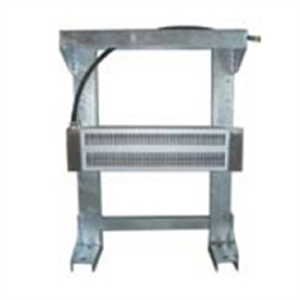�� Micro computer chip control with anemoscope,dogvane,RPM sensor,temperature sensor
�� with off grid and on grid control both function at the same time
�� High-sensitive and high-reliable sensors to check wind speed, wind direction,
temperature.PRM,voltage and current
�� RPM check and control to protect the blade avoide broken
�� Temperature,voltage and current check and control to enable the yawing protection, to protect the generator
�� Triple protection modes:yawing, brake and dump load
�� Cable cast-off function by software and limited spacing function by hardware will prevent
the cables from being twisted
�� Wider voltage range with highest voltage reaching 900VDC to avoid damage of controller
when under high voltage. | |  |
| Technical Specifications | | ITEM | MODE | SZ3KW-CT | SZ5KW-CT | SZ10KW-CT | SZ20KW-CT | | With sensors | Anemoscope,dogvane,RPM sensor,temperature sensor | | Dump loadercapacity | 5KW | 8KW | 15KW | 30KW | | Highest voltage | 900V | | Operation mode | Manual and Automatic only to select the manual while system
Fault,debugging and maintenance etc. | | LCD display | page 1 | Model, power capacity, operational model(manual/auto), on-grid or not | | page 2 | Output DC voltage, output DC current, generator RPM, generator
temperature, wind speed, electric supply available or not, operational mode,
and generator angle | | page 3 | Temperature indoors, brake state (on/off ), dogvane state, cycle of twisting
Cable, anemoscope state, and relay state. | | Anti-twisted function | Once the cables are revolved around one direction more than two circles,
Cable, anemoscope state, and relay state. | | With softwvave | Data collocation software: | Setting controller model and whether it is on-grid or not | | Parameter setup parameter | Setting the operational parameter for controller | | Controller monitor software | Monitoring the operational state of controller |
| |
Limited warranty 12 months for parts and 12 months for labor.
Support URL: http://www.firstsing.com
Support Phone Number: 86-0755-29889139
- customer
- Product name
- Order Total
- Order Date
- Quantity
- Order status
|

